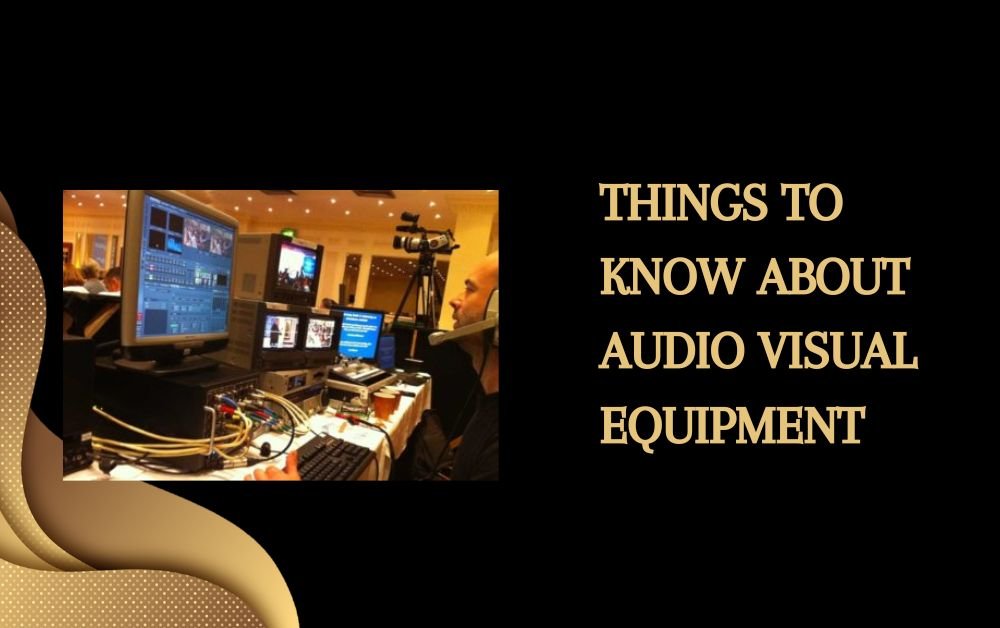Audio visual (AV) equipment plays a crucial role in our daily lives, whether for business meetings, educational purposes, or home entertainment. Understanding the different types of AV equipment and their uses can help you make informed decisions when setting up your own system. This blog will cover the essential aspects of AV equipment, breaking down the key components and explaining their importance in creating a seamless audio visual experience.
Understanding Audio Visual Equipment
What is Audio Visual Equipment?
Audio visual equipment includes any device or system that produces sound and visual displays. These tools are used in various settings, such as homes, schools, businesses, and entertainment venues. The primary goal of AV equipment is to enhance communication and entertainment by delivering clear sound and vivid images.
Why is Audio Visual Equipment Important?
AV equipment is essential because it helps to communicate information more effectively. In business, it can make presentations more engaging. In education, it can make learning more interactive and fun. At home, it can enhance your entertainment experience, whether you’re watching movies, playing games, or listening to music.
Key Components of Audio Visual Equipment
Visual Display Devices
Visual display devices are the screens and projectors that show images and videos. These devices are a cornerstone of any AV setup, providing the visual element that is often central to the user experience.
Projectors
Projectors are used to display images or videos on a large screen or wall. They are ideal for presentations, classroom lessons, and home theaters. Modern projectors offer high resolution and brightness, making the displayed content clear and vibrant.
Screens
Screens are used with projectors to display images. They come in various sizes and types, including pull-down, fixed frame, and portable screens. A good screen can enhance the quality of the projected image, making it sharper and more detailed.
Monitors and TVs
Monitors and TVs are common in both home and office settings. They provide high-definition visuals and are used for everything from watching movies to video conferencing. Smart TVs and monitors with built-in apps offer additional features, such as streaming services and internet browsing.
Audio Equipment
Audio equipment is crucial for delivering clear and immersive sound. Good audio quality can significantly enhance the overall experience, whether in a movie, a presentation, or a live performance.
Speakers
Speakers come in various sizes and types, including floor-standing, bookshelf, and in-ceiling speakers. High-quality speakers provide clear sound with a good balance of bass, midrange, and treble. Surround sound systems, which use multiple speakers placed around a room, can create an immersive audio experience.
Microphones
Microphones are used to capture sound, making them essential for presentations, performances, and recordings. There are different types of microphones, including handheld, lapel, and headset mics, each suited to different purposes. Wireless microphones offer greater flexibility, allowing the user to move freely.
Amplifiers
Amplifiers boost the audio signal from a source, such as a microphone or music player, to drive speakers. They are crucial for ensuring that the sound is loud and clear, especially in larger venues. Integrated amplifiers combine a preamp and power amp in one unit, simplifying the setup.
Connectivity and Control Devices
Connectivity and control devices help integrate various AV components and make them easy to operate. These devices ensure that all parts of the AV system work together seamlessly.
Cables and Connectors
Cables and connectors are the backbone of any AV system, transmitting audio and video signals between devices. Common types include HDMI, VGA, and audio cables. Using high-quality cables can reduce signal loss and interference, ensuring better performance.
Control Systems
Control systems centralize the operation of all AV equipment, making it easy to manage from one interface. These systems can be as simple as a universal remote or as advanced as a touchscreen panel that controls lighting, sound, and video. Some control systems offer automation features, such as preset scenes and schedules.
Choosing the Right Audio Visual Equipment

Assessing Your Needs
The first step in choosing the right AV equipment is assessing your needs. Consider the size of the space, the type of content you’ll be displaying, and the audience. For example, a small meeting room might only need a basic projector and screen, while a large auditorium may require a more sophisticated setup with multiple speakers and microphones.
Budget Considerations
Budget is an important factor when selecting AV equipment. High-quality gear can be expensive, but it often offers better performance and durability. It’s essential to balance your budget with your needs, prioritizing the most critical components first.
Future-Proofing
Technology is always evolving, so it’s wise to choose equipment that can adapt to future advancements. Look for components with flexible connectivity options and upgradable firmware. This approach can save money in the long run by reducing the need for frequent replacements.
Installation and Setup
Proper installation and setup are crucial for getting the best performance from your AV equipment. Professional installation ensures that all components are correctly configured and optimized for your space.
Professional vs. DIY Installation
While DIY installation can save money, professional installation offers several benefits. Professionals have the expertise to handle complex setups and troubleshoot issues, ensuring that everything works smoothly. They can also provide valuable advice on optimizing your AV system for the best performance.
Maintenance and Support
Regular maintenance is essential for keeping your AV equipment in good working order. This includes cleaning components, checking connections, and updating software. Many AV companies offer support services, which can be invaluable if you encounter technical issues.
Conclusion
Audio visual equipment can significantly enhance how you communicate, teach, and entertain. By understanding the key components and how they work together, you can create an AV system that meets your needs and exceeds your expectations. Whether you’re setting up a home theater, equipping a conference room, or planning a public event, investing in high-quality AV equipment is a decision that will pay off in improved experiences and better outcomes.
Note:- To read more articles visit on bithobbies.







More Stories
Syna World new online unique brand shop
Trapstar new online unique shopping shop
Aelfric Eden new online of Urban Fashion shop